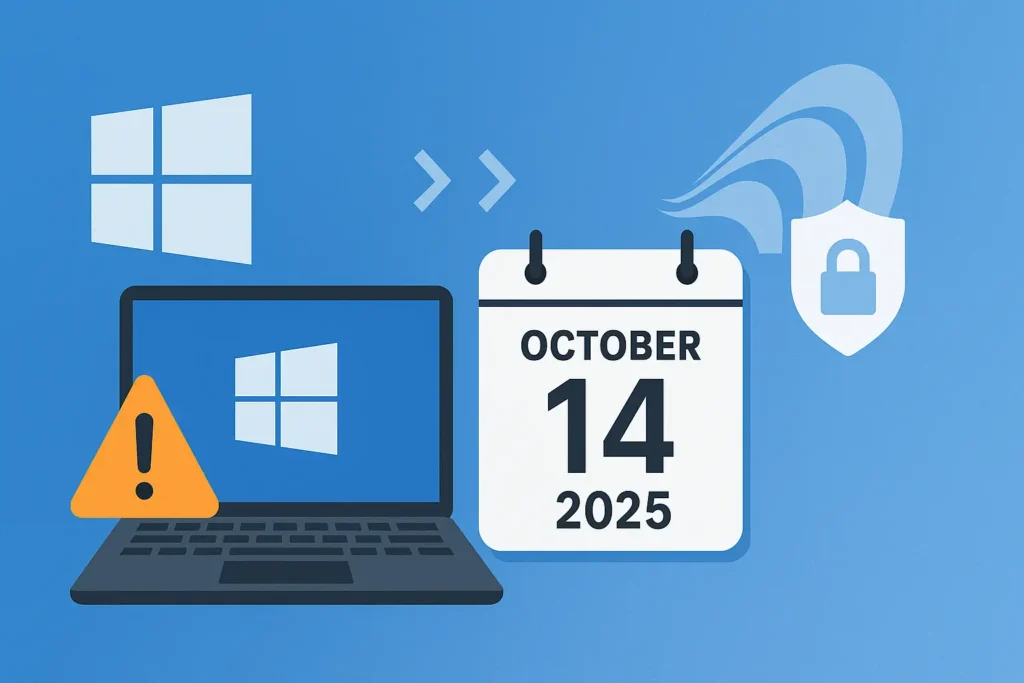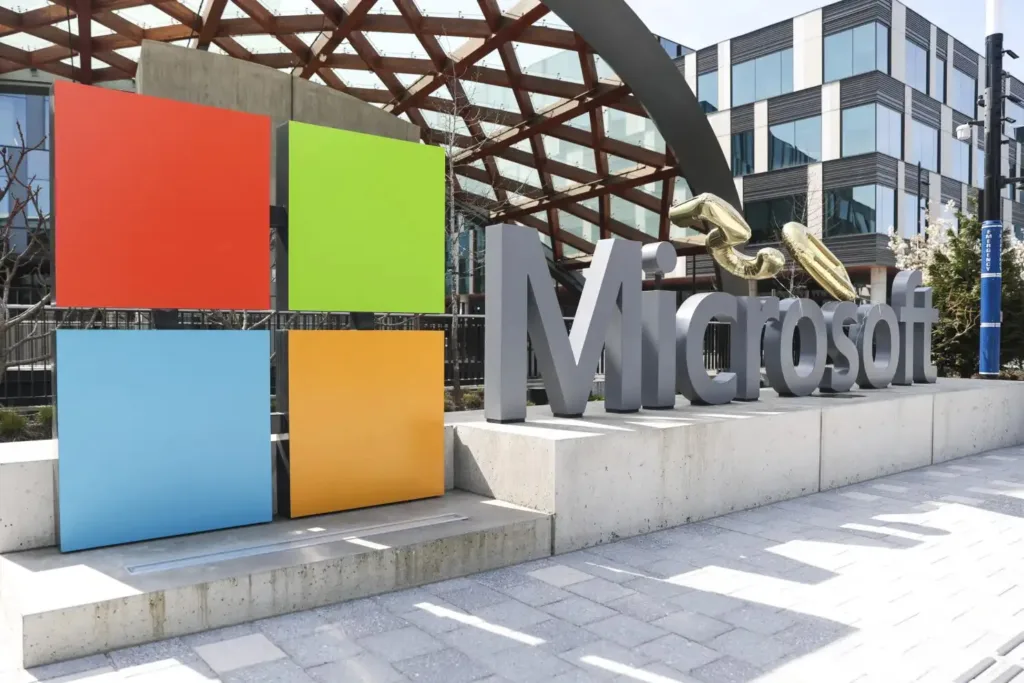Windows 10 has been the workhorse of Microsoft’s operating system family for nearly a decade. Since its launch in 2015, it has powered homes, businesses, schools, and even government systems worldwide. But all journeys end, and for Windows 10 that day is October 14, 2025.
On that date, Microsoft will officially stop providing technical support, feature updates, and most security updates for Windows 10. Devices running the system will still work, but they’ll be more vulnerable to cyber risks. With millions still depending on Windows 10, this transition marks one of the biggest shifts in the tech world since Windows 7’s retirement.
So, what does this mean for you, and what are your options? Let’s break it down.

Key Highlights
- Windows 10 support ends October 14, 2025 — no more security or feature updates for most users.
- Extended Security Updates (ESU) available: free for one year (till 2026) or paid options until 2028.
- Microsoft 365 apps on Windows 10 supported until October 10, 2028, but upgrades are strongly recommended.
- Office 2016 and 2019 support ends in 2025, while Office 2021/2024 continue but face deadlines too.
- Nvidia drivers: Game Ready updates until 2026, security patches for older GPUs until 2028.
- Microsoft and CERT-In (India) urge users to upgrade to Windows 11 for safety.
When Does Windows 10 Support End?
Microsoft has confirmed that October 14, 2025 is the end-of-support date for Windows 10.
After this day:
- No technical assistance.
- No feature updates.
- No regular security patches (unless you join ESU).
Your computer won’t suddenly stop working, but without updates, it will be increasingly exposed to viruses, ransomware, and exploits.
Extended Security Updates (ESU) Explained
To make the transition easier, Microsoft offers an Extended Security Updates (ESU) program.
1. Free Options
- OneDrive/Windows Backup sync: If you connect your PC to Microsoft’s cloud via Windows Backup, you automatically qualify for an extra one year of free updates (until October 2026).
- Microsoft Rewards: Redeem 1,000 points to extend security coverage at no cost.
2. Paid Options
- Home users: $30/year for up to 10 devices, tied to a Microsoft account.
- Businesses & schools: Can buy ESU through Volume Licensing for updates up to October 2028.
👉 Remember: ESU provides security fixes only, no new features or improvements.
Office and App Support on Windows 10
The end of Windows 10 support also impacts Microsoft Office and related apps:
- Office 2016 & Office 2019: Support ends on October 14, 2025, across all operating systems.
- Office 2021 & Office 2024 (including LTSC versions): Will continue running on Windows 10, but won’t be officially supported after 2025.
- Microsoft 365 apps: Updates and security patches will continue until October 10, 2028, even on Windows 10.
Microsoft advises upgrading to Windows 11 for better performance and reliability with Office.
📌 Read More
Other Special Cases
- Windows 10 IoT Enterprise LTSC 2021: Supported until January 2032 (specific to embedded/industrial devices).
- Nvidia drivers: Game Ready driver support until 2026, with limited security driver updates until 2028.
- Windows 11 itself: Some editions have end-of-support deadlines too — for example, Windows 11 22H2 Enterprise/Education also ends support on October 14, 2025.
Microsoft’s 60-Day Warning and Global Alerts
In August 2025, Microsoft began issuing critical 60-day warnings to Windows 10 users. These alerts reminded users to either upgrade to Windows 11 or enroll in ESU before the October deadline.
In India, the Computer Emergency Response Team (CERT-In) also issued an advisory, warning that unsupported Windows 10 devices could quickly become vulnerable to cyberattacks. The government strongly recommends upgrading to Windows 11 to avoid risks.
What Happens If You Stay on Windows 10 After 2025?
If you do nothing, your PC will continue working — but without updates, you face:
- Increased cyber risk from malware, ransomware, and zero-day exploits.
- Compatibility issues as newer apps and drivers stop supporting Windows 10.
- Lack of technical support — even Microsoft’s customer service will no longer help.
In short: your device will run, but it won’t be safe for long.
Upgrade Options: What You Can Do Now
- Upgrade to Windows 11 (free for eligible PCs):
- Check eligibility via Start > Settings > Update & Security > Windows Update.
- Windows Backup makes transferring files and settings to Windows 11 smooth.
- Buy a new PC with Windows 11 pre-installed:
- Microsoft Surface and partner brands offer trade-in programs to recycle your old PC and even earn cashback.
- Stick with Windows 10 + ESU (short-term fix):
- Useful if you need more time before moving to a new device.
- Consider alternatives like Linux:
- For advanced users looking for more control and longer free support.
Global Impact and Bigger Picture
The end of Windows 10 isn’t just about individuals. Organizations worldwide — from schools to corporations — must migrate thousands of devices.
- Enterprises may face significant costs upgrading or buying ESU.
- Schools and governments in developing countries face tighter deadlines.
- Microsoft benefits by pushing more users toward Windows 11 and cloud services like Windows 365.
This is part of Microsoft’s lifecycle policy — offering 10 years of support for major OS releases before retiring them. Windows 10 is reaching its planned end, just like Windows 7 did in 2020.
Final Thoughts
Windows 10 has had a long, successful run, but its official end of support in October 2025 is fast approaching. While Microsoft offers temporary fixes like ESU, the safest path forward is planning your upgrade to Windows 11 or investing in a new PC.
Think of it this way: ESU buys you time, but it’s not a permanent solution. Preparing now means fewer headaches — and much stronger security — in the years to come.
Frequently Asked Questions (FAQ)
Will Windows 10 stop working after October 14, 2025?
No, but it will no longer get updates, making it less secure.
Is the ESU program free for everyone?
No. It’s free for one year if linked to Microsoft services, but otherwise paid.
Can I safely keep using Windows 10?
Not recommended. Security risks will increase over time.
How long will Office apps run on Windows 10?
Microsoft 365 apps will get updates until October 2028.
Is upgrading to Windows 11 free?
Yes, for eligible PCs running Windows 10 version 22H2.
Sources: Microsoft, ET.



